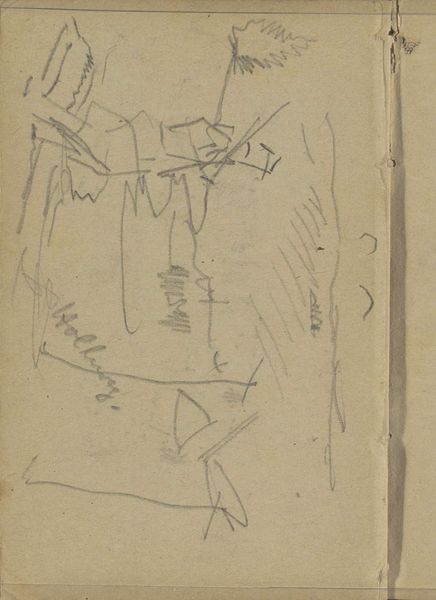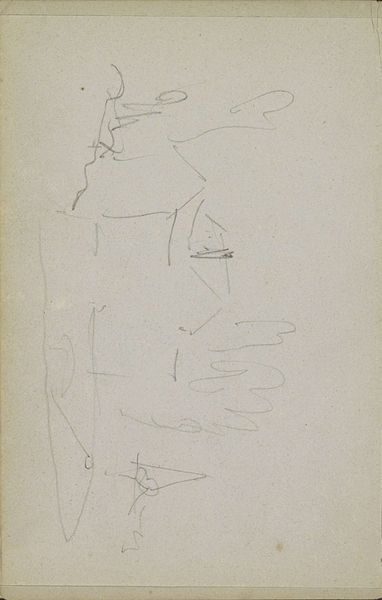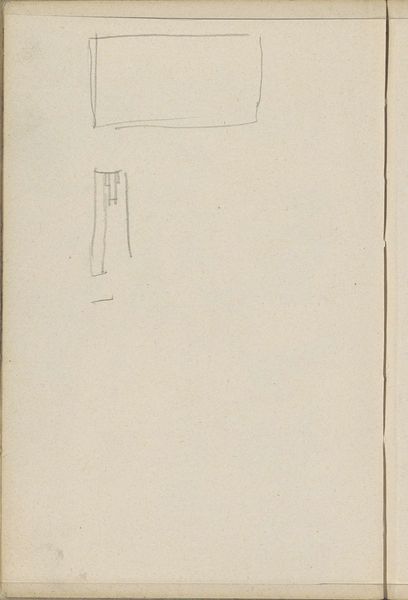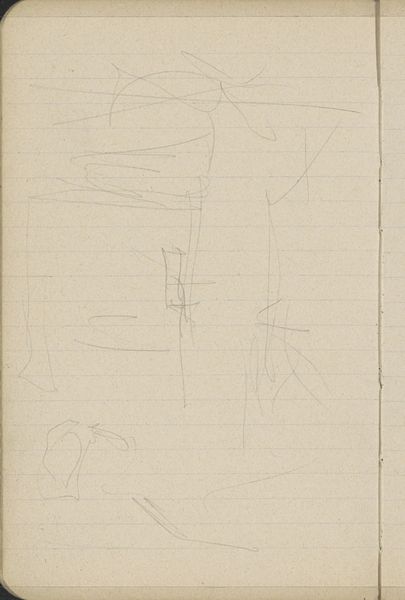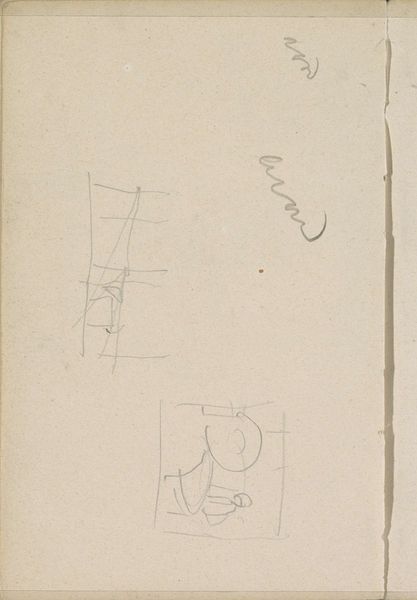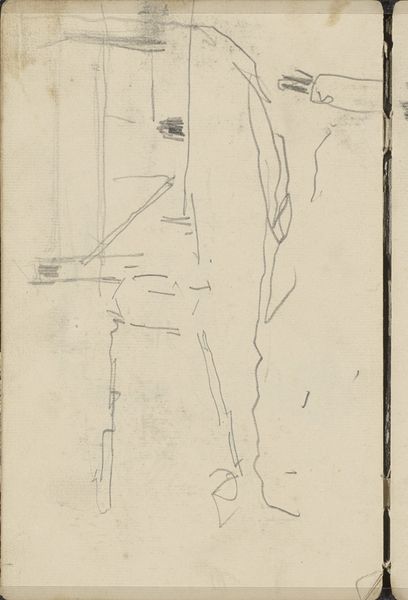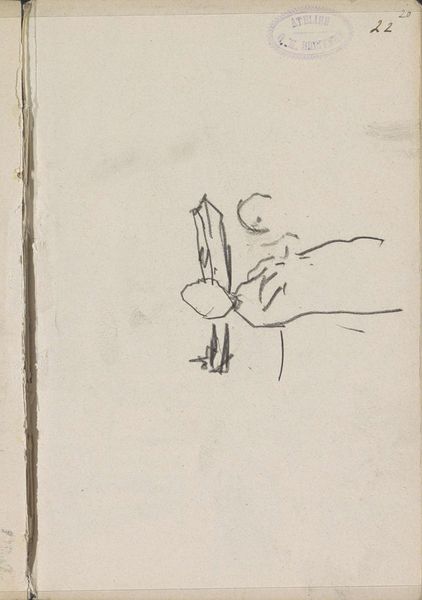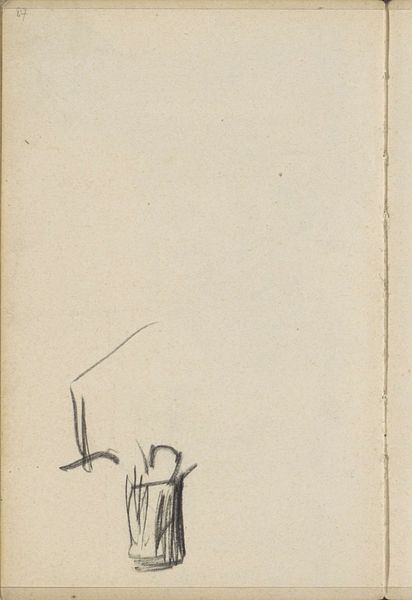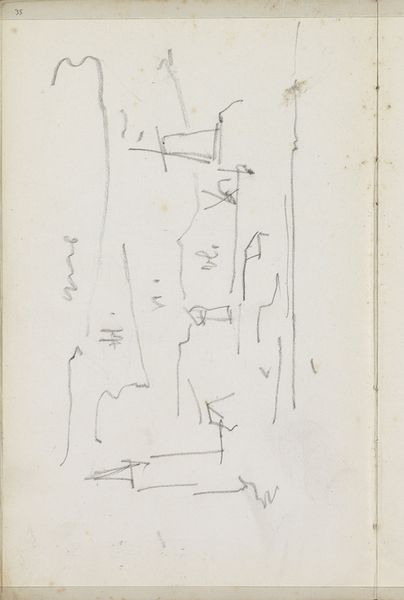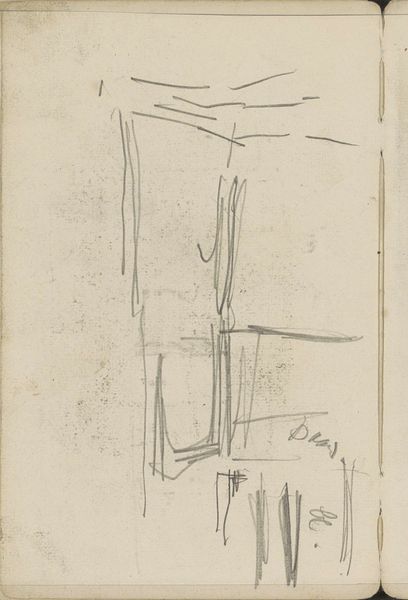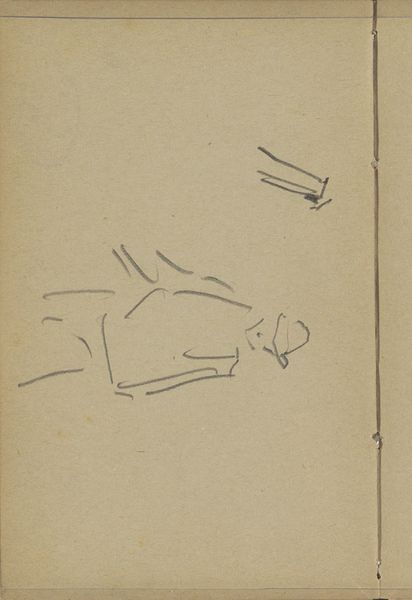
drawing, pencil
#
portrait
#
drawing
#
impressionism
#
sketch book
#
form
#
sketch
#
pencil
#
line
#
sketchbook drawing
Copyright: Rijks Museum: Open Domain
Curator: Let's turn our attention to "Kar," a sketch by George Hendrik Breitner, made sometime between 1887 and 1891. It's currently housed here at the Rijksmuseum. Editor: My initial reaction? A stark simplicity. The sparseness of the lines almost borders on abstraction. I'm intrigued by how much is implied with so little. Curator: Indeed. The lines are rendered in pencil, part of a larger sketchbook drawing. Look at how Breitner uses line to define form. There's a deliberateness to the application of line quality. The subject matter seems less relevant. Instead, the aesthetic principles guide the image construction. Editor: I would contend the subject is relevant. The rapid sketch provides insight into Breitner’s method within the context of his era. These weren't gallery pieces, but rather intimate records of everyday life he saw rapidly unfolding in Amsterdam. What statements might he have made to showcase people that way? How did he pick his muses? Curator: An excellent point about Breitner's artistic choices that reflect both the man and his era! He’s simplifying representation to its most rudimentary aspects. It also suggests brevity and incompleteness that make the artwork less precious. We see drawing stripped back to its essence, purely in terms of its formalism. Editor: True. It makes me think of the democratization of art that was brewing then, a movement towards portraying not just the elite, but the workers, the urban dwellers. And showing the act of creation in a non-precious, almost unfinished state, mirrors the rapidly changing urban landscape, almost as an ethos, mirroring urban life. Curator: I agree that is plausible in principle. However, our focus remains on interpreting this image purely in light of its aesthetics without ascribing such external values to it. I’m grateful that we have come to see the artist's ability to capture form, or in your words "snapshots of history." Editor: I concede this may stand for aesthetic reasons and documentation, as well as its public-facing and cultural purposes in our historical collection. Thanks.
Comments
No comments
Be the first to comment and join the conversation on the ultimate creative platform.
